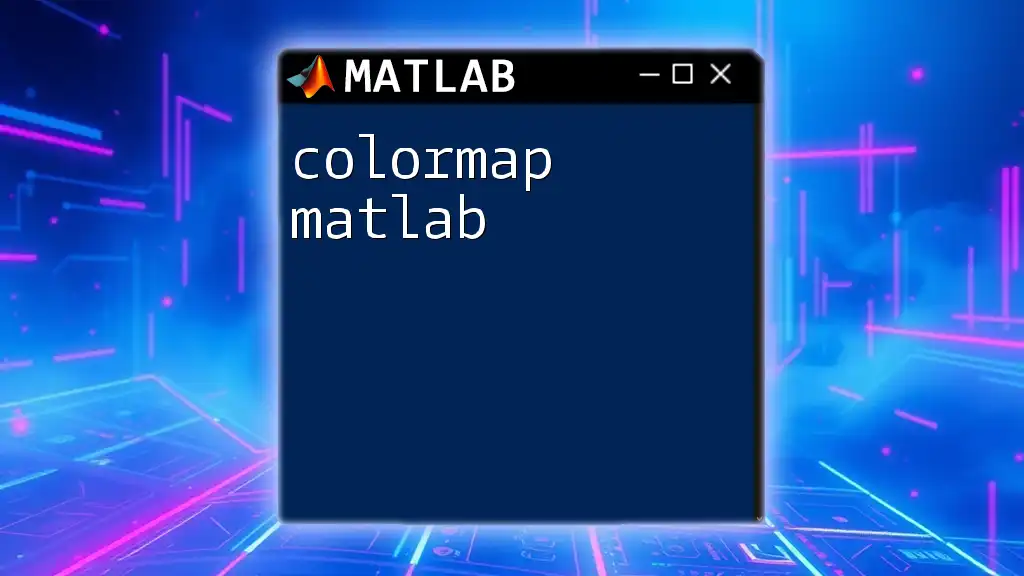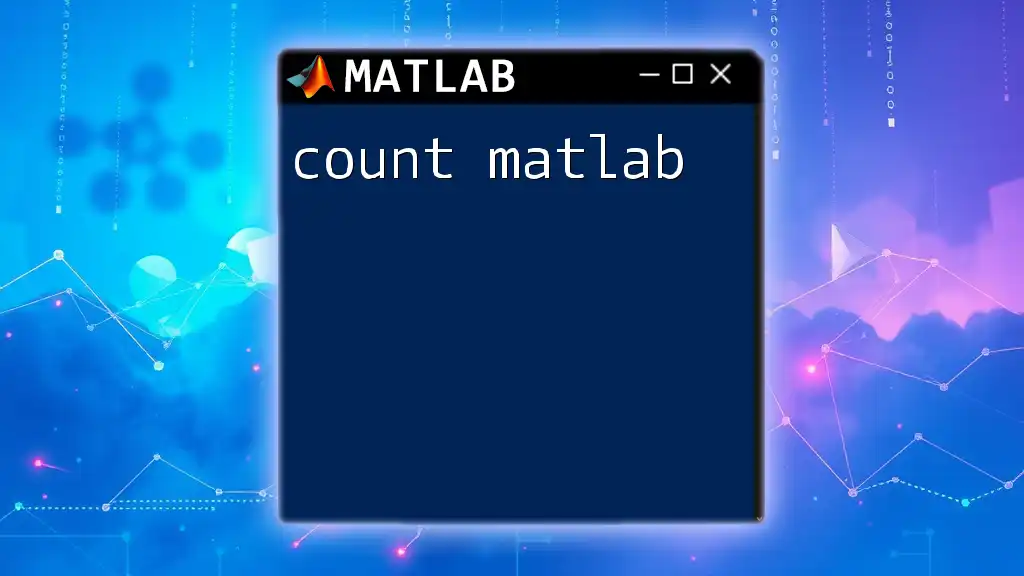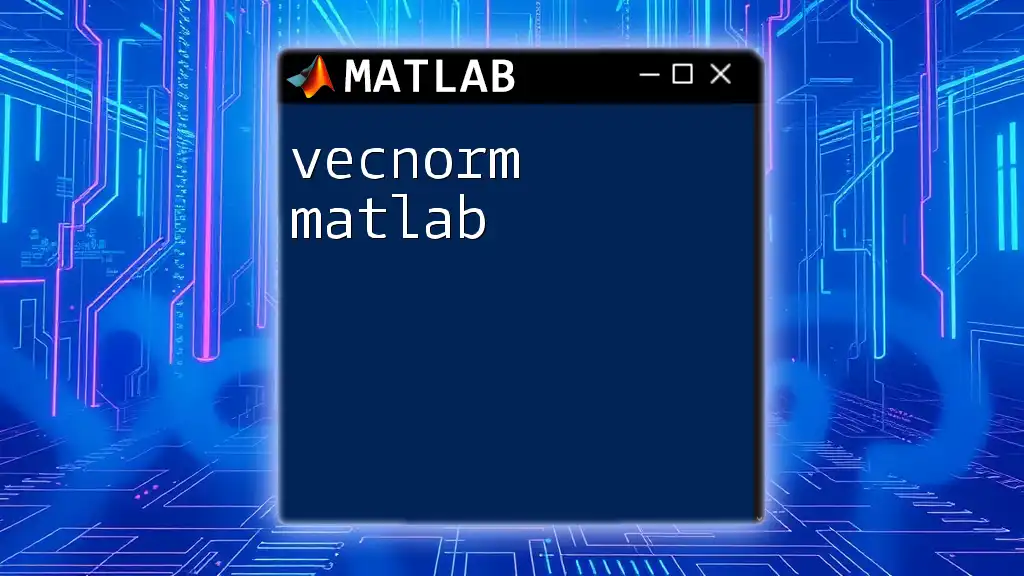The `bwconncomp` function in MATLAB is used to identify and label connected components in a binary image, allowing users to analyze and manipulate individual objects within the image.
% Example of using bwconncomp to find connected components in a binary image
BW = imread('binaryImage.png'); % Load a binary image
CC = bwconncomp(BW); % Identify connected components
numObjects = CC.NumObjects; % Get the number of connected components
Understanding Connected Components
What are Connected Components?
Connected components refer to regions of a binary image that are made up of pixels that are connected in a specific manner. These regions can be defined using two primary types of connectivity:
-
4-connectivity: Pixels are considered connected if they share an edge. This means a pixel can connect to its left, right, top, or bottom neighboring pixels.
-
8-connectivity: Pixels are considered connected if they share an edge or a corner. This means a pixel can connect to all eight surrounding pixels.
Understanding these connectivity types is crucial for accurately defining and isolating regions within an image, making it essential in many image processing tasks.
Why Use Connected Components?
Connected components play a vital role in image segmentation, which is the process of partitioning an image into meaningful segments or regions. Some common applications include:
- Object detection in computer vision, where individual objects within an image need to be identified.
- Medical imaging, where segmentation of anatomical structures, such as tumors or organs, is necessary for diagnostic purposes.
By utilizing connected components, one can efficiently analyze and manipulate specific regions of interest in images.

bwconncomp Function Overview
What is bwconncomp?
The bwconncomp function in MATLAB is specifically designed for identifying connected components in binary images. It enables users to perform connected component analysis quickly and effectively.
Key Parameters of bwconncomp
When using bwconncomp, there are key parameters to consider:
-
Image: This is the input binary image in which connected components will be identified. It must be a logical array where 1s represent the foreground (the object) and 0s the background.
-
Connectivity: This parameter allows users to specify whether they wish to utilize 4-connectivity or 8-connectivity. The choice of connectivity can significantly affect the results based on the structure of the objects in the image.
-
Image Dimensions: While often used for 2D images, bwconncomp can also handle multi-dimensional image data by accepting arrays with higher dimensions.

How to Use bwconncomp
Basic Syntax
The syntax for calling the bwconncomp function is straightforward. Here’s the basic structure:
CC = bwconncomp(BW);
Where `BW` is your binary image, and `CC` is the output structure containing information about the connected components.
Step-by-Step Example
Preparing the Binary Image
To begin, import a binary image or create one for analysis. For instance, if you have an image file named `image.png`, you can convert it to a binary format using:
BW = imread('image.png');
BW = imbinarize(BW);
The `imbinarize` function ensures the image is in binary format before applying bwconncomp.
Running bwconncomp
With your binary image prepared, run the bwconncomp function:
CC = bwconncomp(BW);
Upon execution, `CC` will now hold a structure that includes essential details about the connected components identified in the binary image.
Interpreting the Results
The output structure `CC` contains various fields. Notably, `CC.NumObjects` provides the total number of connected components found, while `CC.PixelIdxList` holds a cell array containing the linear indices of each connected component within the image.
Advanced Usage: Specifying Connectivity
Default Connectivity (8-connectivity)
By default, bwconncomp operates with 8-connectivity. This method is useful when dealing with images where diagonal connections are relevant, common in many images.
CC = bwconncomp(BW, 8);
4-Connectivity
If you need to restrict the connectivity to just edge-sharing pixels, you can run the function with 4-connectivity as follows:
CC = bwconncomp(BW, 4);
Choosing the appropriate connectivity model will directly influence the output analysis, especially in images with distinct shapes and structures.

Analyzing Connected Components
Accessing Properties of Connected Components
Number of Components
To find out how many connected components were detected in your binary image, simply access the `NumObjects` field from the output structure:
numObjects = CC.NumObjects;
This gives immediate insight into how many distinct areas of interest exist in your image.
Pixel Indices of Each Component
Each connected component can be examined further using the `PixelIdxList`, which provides the pixel indices of each component. To access this data, you can use:
pixelList = CC.PixelIdxList;
This information is pivotal when you want to isolate or further analyze individual components in subsequent steps.
Visualizing Connected Components
Overlaying Components on the Original Image
To visualize the detected connected components, you may consider overlaying these on the original image. This allows for immediate assessment of the effectiveness of the segmentation:
labeledImage = labelmatrix(CC);
RGB_label = label2rgb(labeledImage);
imshow(RGB_label);
This process helps in visual validation, making it clear how well the components have been delineated.
Use Cases for Visualization
Visualizing connected components has vast applications, from verifying segmentation accuracy in medical images to enhancing object detection in automated visual systems.

Common Issues and Troubleshooting
Handling Non-Binary Images
In scenarios where your input image isn't binary, the bwconncomp function will raise an error. Therefore, it’s crucial to ensure your image is appropriately formatted. This can be achieved by using `imbinarize`:
BW = imbinarize(grayImage);
Performance Considerations
For dealing with larger images, performance can become a critical factor. Consider using MATLAB's built-in functions optimized for performance. Techniques such as downsampling the image or processing it in chunks can help speed up computations.

Conclusion
The bwconncomp functionality in MATLAB is a powerful tool for connected component analysis in binary images. By leveraging this function, users can efficiently identify and analyze distinct regions, promoting insightful conclusions in fields ranging from computer vision to medical imaging. As you further explore its capabilities, you'll find great value in applying connected component techniques to diverse image datasets and scenarios.

Additional Resources
Official MATLAB Documentation
For more details, including advanced options and examples, visit the official MATLAB documentation for the bwconncomp function.
Tutorials and Examples
Consider exploring various tutorials that showcase practical implementations of bwconncomp in diverse applications.
Community and Forums
Engaging with the MATLAB user community through forums can provide invaluable insights and solutions to common challenges faced when using bwconncomp and other image processing functions.

















